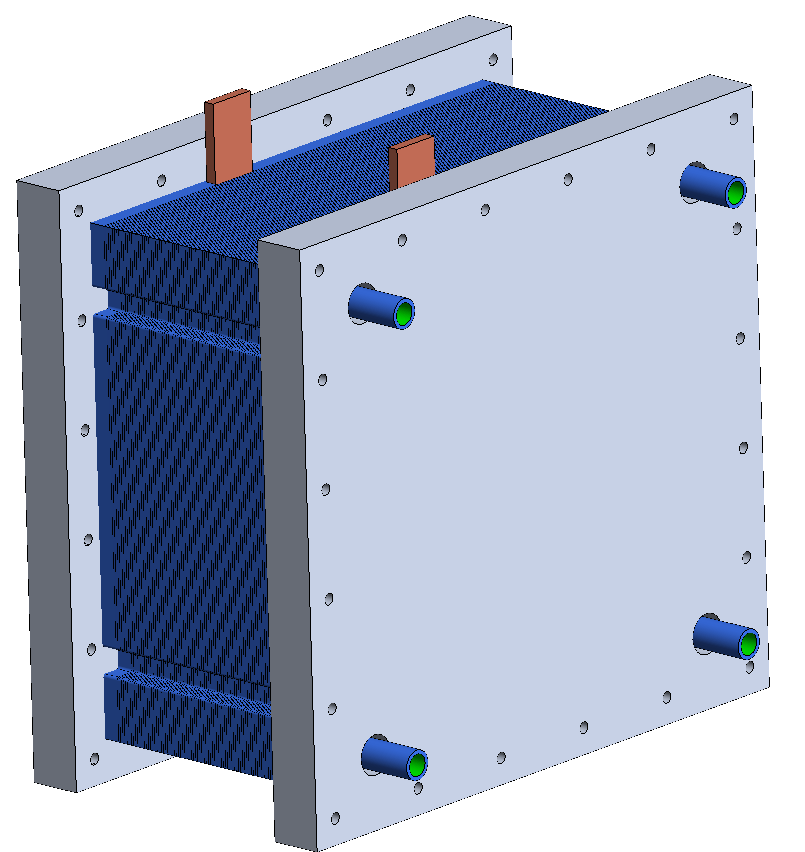The design of a new stack is a challenging task in itself.
The first decision was weather we want to build a simple and cheap stacks or a more sophisticated stacks with higher power output.
We decided to do the latter. Meaning that the power density of the stack should be at least 200mW/cm2 of geometric electrode area and achieve 80% energy efficiency on the DC level.
The cost of the stack per kW play a major role for the marketing of the final product.
Therefore, several parameters such as the geometric electrode area had to be defined before starting the design.
We chose an electrode are of more than 1000cm2.
The advantage of this is that the stack would have more than 8kW nominal power, which reduces the amount of stacks that are required to build a MW system.
The thickness and the compression of the electrodes has a direct influence on the power density of the stack.
After a thorough review of recent literature we picked a flow design and an electrode thickness that would allow for simple manufacturing, reduced cost and also high power output.
Two different membranes with different thicknesses have been selected to be used on the first prototype stacks.
These membranes were selected based on the ion exchange capabilities, cost and availability.
After all initial active material have been selected we started to design the stack parts.
The sealing concept is one key part of the battery design.
There are plenty of options to choose from.
We decided to optimize the sealing concept for large scale manufacturing and cost.
The sealing material was also selected based on the chemical properties of the material, since the Vanadium electrolyte is strong oxidizing agent.
ACKNOWLEDGEMENT:
This work was supported by the project: IPCEI_IE_FLOW_BESS_012021


